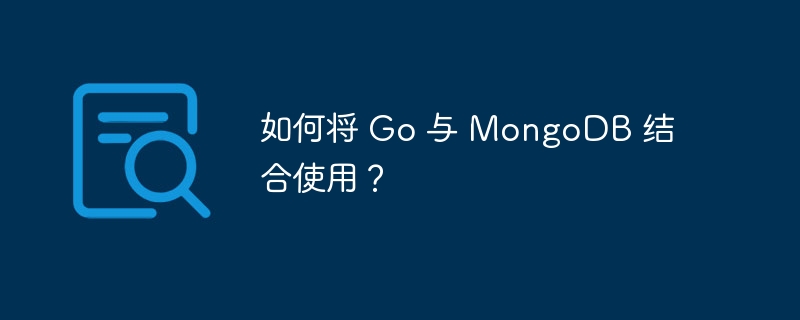Home >Database >Mysql Tutorial >How to use Go with MongoDB?
How to use Go with MongoDB?
- WBOYWBOYWBOYWBOYWBOYWBOYWBOYWBOYWBOYWBOYWBOYWBOYWBforward
- 2023-09-13 21:25:021053browse

MongoDB is a popular NoSQL database that is widely used in modern web applications. Go, on the other hand, is a fast and efficient programming language that is increasingly popular for building web applications. In this article, we will discuss how to use Go with MongoDB, including how to connect to a MongoDB database and how to perform basic CRUD operations.
Install the Go version of the MongoDB driver
Before we start using Go with MongoDB, we need to install Go’s MongoDB driver. The easiest way is to use the following command -
go get go.mongodb.org/mongo-driver/mongo
This command will download and install Go's MongoDB driver, which we will use to connect to the MongoDB database.
Connect to MongoDB database
To connect to a MongoDB database using Go, we first need to create a MongoDB client object. We can do this using the following code -
clientOptions := options.Client().ApplyURI("mongodb://localhost:27017")
client, err := mongo.Connect(context.Background(), clientOptions)
if err != nil {
log.Fatal(err)
}
In this code, we create a MongoDB client object by specifying the URI of the MongoDB server. We then connect to the database using the mongo.Connect() function, passing in the context.Background() object as the first parameter.
Perform CRUD operations
After connecting to the MongoDB database using Go, we can start performing basic CRUD operations. The following code demonstrates how to insert a new document into a MongoDB collection -
collection := client.Database("mydb").Collection("users")
user := bson.M{
"name": "John",
"email": "john@example.com",
}
res, err := collection.InsertOne(context.Background(), user)
if err != nil {
log.Fatal(err)
}
id := res.InsertedID
fmt.Println("Inserted document with ID:", id)
In this code, we create a new document object using the bson.M type, which is used to represent MongoDB documents in Go. We then insert the document into the MongoDB collection using the collection.InsertOne() function, which returns a result object containing the ID of the newly inserted document.
in conclusion
In summary, using Go with MongoDB is a simple process and can be accomplished using Go’s official MongoDB driver. Following the steps outlined in this article, you can use Go to connect to a MongoDB database and perform basic CRUD operations, such as inserting documents into a collection. As you become more familiar with Go and MongoDB, you can use these tools to build complex web applications that can scale to meet the needs of your users.
The above is the detailed content of How to use Go with MongoDB?. For more information, please follow other related articles on the PHP Chinese website!

